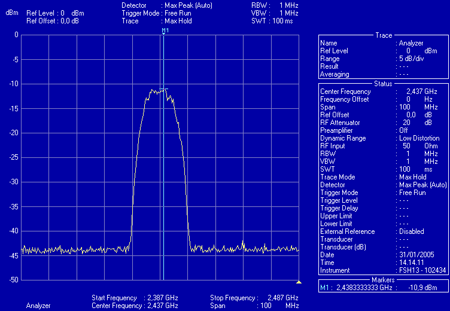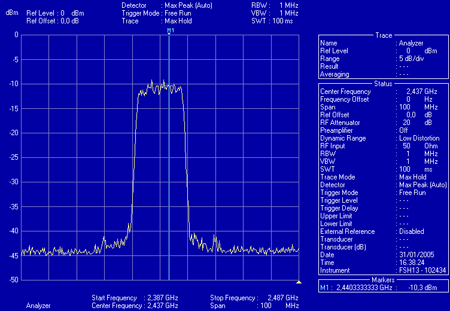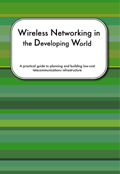Available spectrum
The observable electromagnetic spectrum is quite large.

Spectrum used in 802.11b/g
802.11 b/g makes use of the ISM band from 2.400 GHz through 2.495 GHz.

802.11 b/g Channels
The spectrum is divided into 14 channels. Each channel is 22 Mhz wide, and the center frequency of each channel is separated by 5 MHz (with the exception of channel 14).

Avoiding interference
Networks operating on non-overlapping channels will not interfere with each
other.

Avoiding interference
Networks operating on non-overlapping channels will not interfere with each
other.

Avoiding interference
Networks operating on non-overlapping channels will not interfere with each
other.

Band plan
By carefully planning the location and channel of your access points, it is theoretically possible to build an arbitrarily large network without any channel overlap.

Channel overlap
In practice, it is often impossible to create a perfect band plan, and some overlap will almost certainly occur.
The worst possible case is that of two busy networks operating on the same channel. As the channels are separated further apart, the apparent interference decreases.
802.11b vs. 802.11g
Due to the differences between DSSS and OFDM, 802.11b tends tolerate networks on adjacent channels somewhat better than 802.11g.


Credits
Portions of this talk were adapted from Wireless Networking in the Developing World, http://wndw.net/
